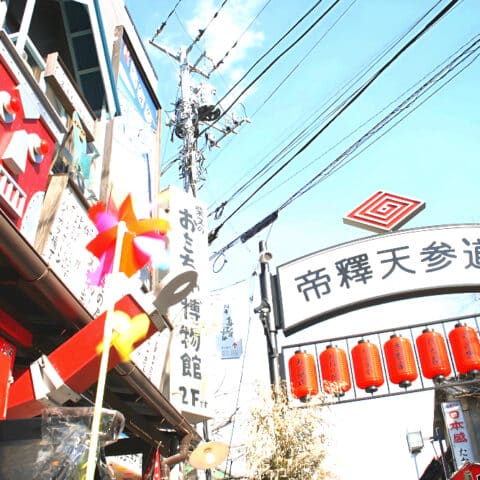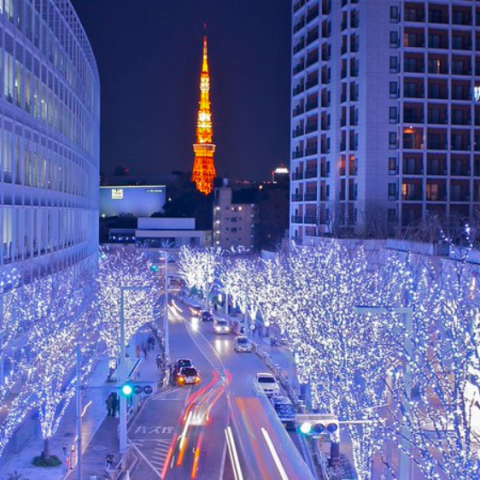
The sun beats down on your brow and glistening sweat drips down your forehead as summer brings a sweltering heat that attempts to roast you alive. Well, that’s August in Tokyo for you. But besides those long dog days, the month has something else in store, and that’s of course: Festivals! Festivals, festivals, festivals, and a boatload of other colorful events waiting outside your doorstep. Rather than languishing in the humid breeze, young and old pour into the streets to celebrate the summer season with boisterous abandon. So, why don’t we join in the fun? Let’s turn up the AC, sip an ice-cold ramune, and munch on a slice of watermelon as we discover a few interesting things happening in August.

Itabashi Fireworks Festival – Photo Credit: The Best Japan
Itabashi Fireworks Festival
The image of ‘Tokyo summer’ is inextricably tied to fireworks, and it’s no wonder seeing as they’ve existed as an art form within Japan for centuries. The culmination of such a rich history is marvelously exemplified by this festival right here. Standing as one of the largest fireworks displays in the city, it annually fills the night sky with over 15,000 pyrotechnics. Its awe-inspiring magnitude is in part due to it taking place on the banks of the Arakawa River, as the timing coincides with that of the nearby Toda city’s own fireworks festival. This leads to a show that packs quite the punch. Crazy coincidence – awesome result!
The country’s best and brightest pyrotechnicians use this as an opportunity to offer up the most dazzling showcase of light. Amongst this superb array, a yearly crowd-pleaser is the aptly nicknamed “Niagra Falls” a 700-meter-chain sparkling wonder that cascades down, just like a waterfall. The shaku-gosundama which boasts a resplendent diameter of 360 meters when launched into the air, is similarly met with roaring applause. For the Pokemon fans among you, this year you can look forward to seeing a few familiar characters grace the sky. With the seats so close, the reverberations can be felt thundering through the soles of your feet to the pit of your stomach. We implore you not to miss out on this brilliant experience if you can help it.
We recommend purchasing a reserved seat in advance for an optimal viewing experience. Prices range from ¥4,500 to ¥6,000 for individual tickets and ¥18,000 to ¥36,000 for parties of four to eight.
Date: August 3rd
Location: Arakawa Todabashi Green Space
Start/End Time: 5:00 P.M. – 7:00 P.M.
Fees: Free admission
Website: https://itabashihanabi.jp/

Illuminated lanterns floating down the Sumida River – Photo credit: 365 Asakusa
Asakusa Toro Nagashi
Tōrō-nagashi (灯篭流し) or lantern floating is a tradition whose roots are planted in honoring and remembering the souls of those dearly departed. At the one held at Asakusa’s Sumida Park, folks let their lanterns be carried by the river’s soft current from the Shinsui terrace and make wishes. Holding a strong history, it isn’t hard to see why this festival has become such an important tradition for the area. In 1946, the tragedy that was the Great Kanto Earthquake, and the numerous air raids and firebombings that befell Japan during World War II, ravaged and claimed the lives of thousands. This event, at the time called “The Festival of Recovery,” was held as a way to reckon with the aftermath of these disasters. The lambent glow of paper lanterns floating down the Sumida River is a much more mellow and quiet affair than your regular heart-pounding matsuri. The shade and warmth of the summer evening present a chance for reflection, recounting our past, taking into account our present, and anticipating our future. The serenity of the moment is the perfect space for reminiscence and makes this ceremony a glowing memorial to the spirits of the fallen.
We recommend you save yourself a seat a few hours before the stated start time of the festival, and if you’re interested in releasing your own lantern, they are available to purchase for ¥1500.
Date: August 10th
Location: Sumida Park
Start/End Time: 6:45 P.M. – 8:00 P.M.
Fees: Free admission
Website: https://e-asakusa.jp/culture-experience/99406

Purifying water is sprayed on participants as the portable shrine is carried – Photo credit: Shuets Udono
Fukagawa Hachiman Matsuri
Around the middle of August in Fukagawa, everyone in the neighborhood comes together, jovial and in high spirits, to kick off what is a morning-to-evening romp of fun and celebration under the sun. Hosted by the Tomioka Hachiman-gū shrine, it’s regarded as one of Tokyo’s biggest Shintō festivals keeping company with the Kanda festival and Sanno festival.
Totting the sobriquet of “mizu-kake matsuri” or “the water throwing festival”, it’s a fitting description of what this festivity entails. As mikoshi — portable Shinto shrines — are paraded down the streets, purifying water is sprayed, splashed, and thrown at those who carry these ornate palanquins, creating a soaked procession and a great way to fight the heat! Water basins are arranged along the 8-kilometer route to dip buckets into and around the block families wait at their doors, hoses, and water guns in hand, for the festival to arrive at their street. Firefighters and policemen join in too, making their hefty contributions to the deluge – no one is getting out of here dry!
During the festivities. nearby food stalls serve crispy yakitori and a litany of other delicious comestibles, taiko drums pound booming rhythms over chants of “Wasshoi, Wasshoi!”, and the twang of koto can be heard, completing the festival atmosphere. Though it’s an annual event, activities are ramped up by a factor of ten during the Hon-matsuri, which happens every three years and sees the deployment of 50 of the Tomioka Hachiman-gū’s portable shrines (the next one is in 2026 so if you’re interested, make sure to mark it in your calendar). It takes place over five days so there’s plenty of time to experience the showers of the mizu-kake matsuri!
Date: Mid-August (official date TBA)
Location: Tomioka Hachiman Shrine
Start/End Time: 7:30 A.M. – 5:00 P.M.
Fees: Free admission excluding food and drink
Website: http://www.tomiokahachimangu.or.jp/

Photo credit: NPO Tokyo Koenji Awa Odori Promotion Association
Koenji Awa-Odori
From high schoolers to office workers to those in the golden years of their lives — many everyday folks choose to dedicate a chunk of their evening to perfect the choreography of this special performance and showcase their moves at what is Tokyo’s premier street dance festival. This year around 10,000 dancers from over 150 unique troupes will see the fruits of their labor, as about one million people hailing from various parts of not only Japan but around the world will crowd into Koenji to witness and be amazed by the moving artistry that is their awa-dori routines.
Awa-Odori (odori meaning dance) originates from the Shikoku Islands of Tokushima prefecture (previously known as Awa province) and is a 400-year-old practice that has touched many corners of the country. The Awa-Odori in Koenji has a history spanning 67 years, with the inaugural festival having been held in 1957. It was seen as an easy way to reinvigorate the district and was initially isolated to the local shopping streets that were there throughout. However, year after year, as it amassed in popularity the scope of the festival would spread, and the 1960s would see it reaching the north exit of Koenji station — by 1969 it had gone beyond even that.
The dancing troupes each don their respective matching yukata, but besides that can be recognized by their distinctive chants and music. On the topic of music, if you decide to go, you’ll get to hear live shamisen, flutes, chimes, and taiko, all of which make the streets sing, and encapsulate the joyful occasion.
Date: August 24 – August 25
Location: Between the south exit of JR Koenji Station and the north exit of Tokyo Metro Shin-Koenji Statio
Start/End Time: 5:00 P.M. – 8:00 P.M
Fees: Free excluding food and drink
Website: https://www.koenji-awaodori.com/language/eng.html

An example of one of Tatsuya Tanaka’s pieces entitled “And you can eat it too” – Photo credit: Takashimaya
Tatsuya Tanaka Exhibition: MINIATURE LIFE ・MITATE MIND
Tatsuya Tanaka is a photographer who deals with and warps perspective through his most prevalent subject matter — miniature, and his expertise in mitate — a Japanese art form that asks the viewer to see the objects in a piece in a new light. Tanaka does just that, using what may be to us, things we just have sitting around the house, as the basis for cute, funny, and mind-bending scenes. In his world blue coat hangers become a surfer’s next big wave, and kernels of corn work as both a tasty snack and a fashionable accessory. His exhibit in Seoul clocked in over 90,000 visitors during just the two months that it was running, and now for the entire month of August, we here in Tokyo are getting the chance to peek in on Tanaka’s “Miniature Life, Mitate Mind” for a limited time. Separated into the seven themes of ‘Home’, ‘Form’, ‘Colour’, ‘Scale’, ‘Motion’, ‘Life’ and ‘World’, “Miniature Life, Mitate Mind” encompasses a total of 160 miniatures, all of which are making their debut in Japan.
Date: August 1st – August 28th
*Closed on August 21st (Wed)
Location: Main building 8th-floor hall of Nihombashi Takashimaya S.C.
Start/End Time: 10:30 A.M. – 7:00 P.M.
Fees: Adults – advance sales: ¥1,000, at the door: ¥1,200
Students – advance sales: ¥1,000 At the door: ¥800
Website: https://www.takashimaya.co.jp/store/special/tatsuya_tanaka_nihombashi/index.html

Azabu Jūban Festival 2008. Festival-goers pass by an Indian food stall. – Photo credit: [puamelia]
Azabu Jūban Noryo Festival
Though the festival has only been around since the 1960s, the Azabu-Juban district is known for being a spot popular amongst the youth; leading to it having a very low-key feel that has bled into the atmosphere of the Azabu Juban Noryo. It makes the last part of its name “Noryo” aka “cooling evening”, unintentionally fitting since it’s a pretty “cool” way to spend your evening.
The streets of Patio-dori and Zoshiki-dori bustle with foot traffic, lively chatter, and sizzling grills. Food stalls are almost flush against one another—it’s a gustatory heaven as far as the eye can see. You can dig into specialty cuisine from across the map, and from the bottom to the top of Japan. But ‘across the map’ extends internationally as well, with foreign dishes being up for the taking, and reflecting the ‘modernness’ of this festival. Whatever your palette you’ll walk out with a full belly!
While you’re busy stuffing your face, you can mosey on down to the “10-BANG” stage to watch some live performances or even traditional Japanese comedy. Once you’ve had your fill you can try your luck at beating some game stalls. Maybe make it a challenge between you and your friends if they decide to tag along! There are plenty of activities intended for the kiddos making this a perfect family outing as well.
Date: August 24 – August 25
Location: Azabujuban Shotengai Shopping Street
Start/End Time: 3:00 P.M. – 9:00 P.M.
Fees: Free excluding food and drink
Website: https://www.azabujuban.or.jp/topics/topics_event/21792/
Tokyo, as colorful, and vibrant as it is, can be said to be alive, with each street being considered a vein in this ginormous metropolitan organism. Walk from one street to another, and inspect every nook and cranny—you’ll always be able to find some wonderful experience waiting for you. And though August may seem to curse us with the scorching heat it is also full-to-bursting with a cool assortment of ways to cross the days off your calendar. There are times to relax and kick back and times to holler and go hog-wild, as we look to the future, we think about the past, and for 30 days enjoy every second of the present. We hope this list has inspired you to go out and live out your best August in Tokyo!
Feature photo credit: Ayumi Kubo
On a trip to Tokyo? Book your local guide to learn more about Japanese food and culture.



